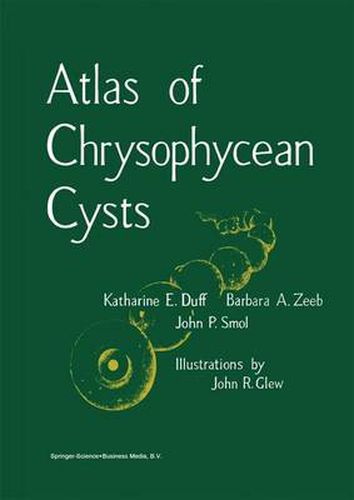Readings Newsletter
Become a Readings Member to make your shopping experience even easier.
Sign in or sign up for free!
You’re not far away from qualifying for FREE standard shipping within Australia
You’ve qualified for FREE standard shipping within Australia
The cart is loading…






This title is printed to order. This book may have been self-published. If so, we cannot guarantee the quality of the content. In the main most books will have gone through the editing process however some may not. We therefore suggest that you be aware of this before ordering this book. If in doubt check either the author or publisher’s details as we are unable to accept any returns unless they are faulty. Please contact us if you have any questions.
Chrysophycean algae are a diverse and often abundant group of primarily freshwater phytoplankton, characterized by the endogenous formation of siliceous cysts or stomatocysts (also called statospores or statocysts). Cyst morphology is highly variable, but believed to be species-specific.
Recently, cysts have received considerable attention from phycologists and especially paleoecologists who wish to use these indicators for assessments of environmental change. Nonetheless, attempts at using cysts have often been hampered by taxonomic problems.
This Atlas dispels some of the mystery surrounding stomatocysts, facilitating the accurate identification of individual cyst morphotypes, and encouraging other workers to begin using these important indicators. The terminology used to describe cysts is outlined in detail, followed by detailed descriptions of cyst morphotypes, following International Statospore Working Group (ISWG) guidelines, complemented by scanning electron and light micrographs, as well as line illustrations. Any available biogeographical and ecological information is also provided. These descriptions will further accelerate the continued effort to link cyst morphotypes to the algae that produce them.
For paleoecologists who wish to include stomatocysts in their studies, researchers working with living chrysophycean algae, and those interested in the morphology and ultrastructure of cyst morphotypes.
$9.00 standard shipping within Australia
FREE standard shipping within Australia for orders over $100.00
Express & International shipping calculated at checkout
This title is printed to order. This book may have been self-published. If so, we cannot guarantee the quality of the content. In the main most books will have gone through the editing process however some may not. We therefore suggest that you be aware of this before ordering this book. If in doubt check either the author or publisher’s details as we are unable to accept any returns unless they are faulty. Please contact us if you have any questions.
Chrysophycean algae are a diverse and often abundant group of primarily freshwater phytoplankton, characterized by the endogenous formation of siliceous cysts or stomatocysts (also called statospores or statocysts). Cyst morphology is highly variable, but believed to be species-specific.
Recently, cysts have received considerable attention from phycologists and especially paleoecologists who wish to use these indicators for assessments of environmental change. Nonetheless, attempts at using cysts have often been hampered by taxonomic problems.
This Atlas dispels some of the mystery surrounding stomatocysts, facilitating the accurate identification of individual cyst morphotypes, and encouraging other workers to begin using these important indicators. The terminology used to describe cysts is outlined in detail, followed by detailed descriptions of cyst morphotypes, following International Statospore Working Group (ISWG) guidelines, complemented by scanning electron and light micrographs, as well as line illustrations. Any available biogeographical and ecological information is also provided. These descriptions will further accelerate the continued effort to link cyst morphotypes to the algae that produce them.
For paleoecologists who wish to include stomatocysts in their studies, researchers working with living chrysophycean algae, and those interested in the morphology and ultrastructure of cyst morphotypes.